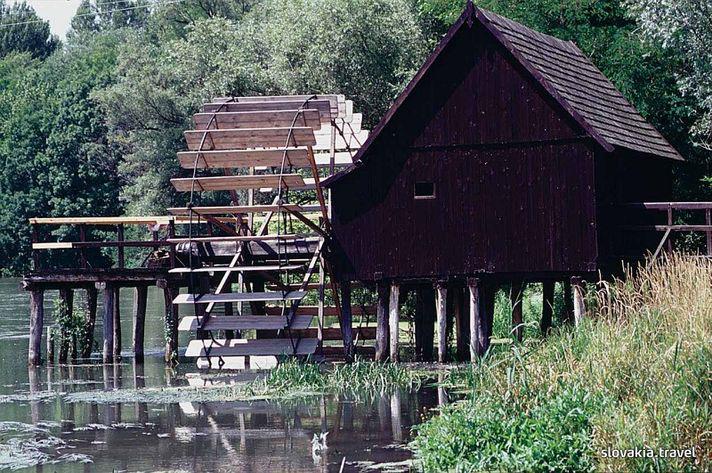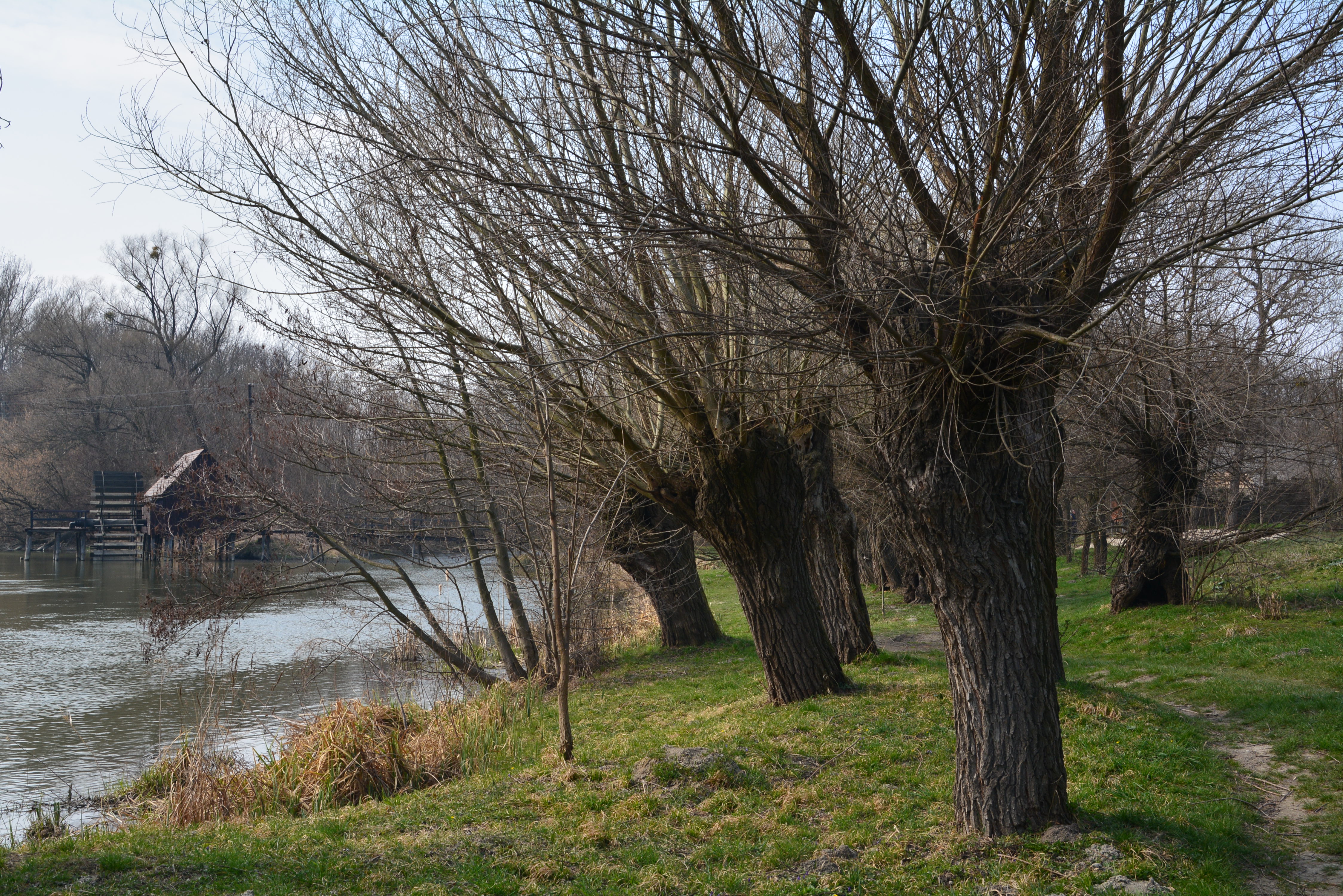Watermill in Tomášikovo
The gristmill in Tomášikovo in south-western Slovakia is one of the few remaining watermills left in Slovakia with a bottom mill race. Today it functions as a technical landmark of rural milling in southern Slovakia.

The mill is located approximately 2 km from the village of Tomášikovo on the Little Danube near its confluence with Suchý potok brook. Miller János Maticza built the mill in 1893. The most recent overhaul and modernisation of the mill took place in 1940. The mill was in service until 1960. The mill was refurbished and modified as an exhibit for the local history museum Vlastivedné múzeum in Galanta in 1982.
The shingle-roofed mill building with the large bladed drive wheel powered from below is constructed on locust pillars and is still functional. The mill has its original interior and original mill tools. The mill is accessed by a wooden walkway with railing from the shore.
Pollarded willows
Stands of old pollarded willows are common on the bank of the Little Danube. The name is derived from the shape of the trunk where the upper branches are removed to promote thick foliage and branch growth. The shape is the result of many years of pruning during the winter months. The cuttings were previously used to construct shelters and to make woven baskets and other items in particular.
Pollarded willows are an important landscape element in the managed landscape. Their heads or the various hollows serve as important nesting locations for a variety of bird species and for insect breeding. A number of plant species make their homes in the dust and debris that collect in the upper parts of the trunks over the year. Herbs and even shrubs, such as black elder, can even be seen on the willows in nearby areas.

